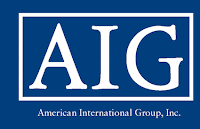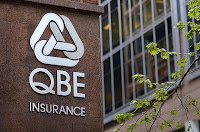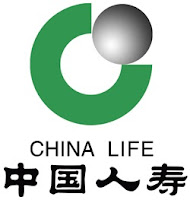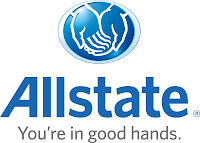Selective Insurance Group financial results ended December 31, 2012 : Selective Insurance Group, Inc. (NASDAQ:SIGI) today reported its financial results for the fourth quarter and year ended December 31, 2012. For the quarter, net income per diluted share was $0.02 and operating loss1 was $0.04. Net income for the year was $0.68 per diluted share and operating income1 was $0.58 per diluted share. Overall net premiums written grew 5% in the quarter and retention was up a point to 85%.
�Hurricane Sandy was the most significant event in company history, yet we still ended the quarter with positive net income � a testament to our strong underlying insurance operations performance and our comprehensive reinsurance program,� said Chairman, President and Chief Executive Officer Gregory E. Murphy. �For the quarter, Sandy resulted in net catastrophe losses of $47 million and a reinsurance reinstatement premium of $9 million; partially offset by flood claims handling fees of $16 million; resulting in an overall, pre-tax, net loss of $40 million and $0.46 per diluted share after tax. Sandy contributed 9.8 points to the combined ratio for the quarter, but only 2.5 points to the year, yielding an overall fourth quarter statutory combined ratio of 110.4%, excluding the impact from Sandy2 it was 100.6%.
�The hurricane made landfall in our top market share state of New Jersey,� said Murphy. �Our Claims and Flood departments have been working tirelessly to resolve claims quickly and fairly, and to inform flood customers of the federally mandated National Flood Insurance Program�s claims process. Personal lines received approximately 8,000 claims and have closed 85% and commercial lines received approximately 5,000 claims and have closed 62%.
�We were pleased with our overall performance in the quarter, delivering a statutory combined ratio of 100.6%, excluding the impact of Sandy2. Personal lines led the positive results with a combined ratio of 93.9%, excluding Sandy2, and renewal price that increased 8.3% for the quarter. In personal lines, we continue to file rate increases as well as improve the mix of business and expand the number of agency storefronts,� said Murphy.
�For the quarter, standard commercial lines had a combined ratio of 101.1%, excluding Sandy2,� continued Murphy. �We completed our 15th consecutive quarter of price increases with standard commercial lines renewal price up 6.7%, and 6.2% for the year. Our granular pricing strategy and sophisticated underwriting, as well as our strong agency relationships, has given us an edge over the past several years that continues to pay off in strong results.
�Investment income for the quarter was $26 million, after tax, compared to $23 million in the fourth quarter 2011, due to improved performance in the alternative investment portfolio. For the year, investment income, after tax, was $100 million. We continue to manage our investment income through a very low interest rate environment without unduly adding more credit or duration risk,� concluded Murphy.
Fourth Quarter Highlights 2012 Compared to Fourth Quarter 2011
Net income of $1.3 million, or $0.02 per diluted share, compared to $18.0 million, or $0.33 in 2011
Operating loss1 of $2.3 million, or $0.04 per diluted share, compared to operating income1 of $20.4 million, or $0.37 in 2011
Combined ratio: GAAP: 109.0% compared to 97.9% in 2011; Statutory: 110.4% compared to 98.7% in 2011
Combined ratio excluding the impact of Hurricane Sandy2: GAAP 99.3%; Statutory 100.6%
Favorable prior year statutory reserve development on our casualty lines totaled $2 million compared to $10 million in 2011
Total net premiums written (NPW) were $370.6 million, which were reduced by the reinstatement premium related to Hurricane Sandy of $8.6 million
Standard Commercial Lines NPW were $273.2 million
Standard Personal Lines NPW were $68.1 million
Excess and Surplus Lines NPW were $29.4 million
Catastrophe losses were $33.8 million, after tax, including $30.3 million for Hurricane Sandy
Gross pre-tax catastrophe losses from Hurricane Sandy were $136 million
Flood net income of $12.0 million, after tax, including $10.1 million for Hurricane Sandy
Investment income, after tax, was $26.3 million
Net realized gains, after tax, totaled $3.6 million
Year-End Highlights for 2012 Compared to Year-End 2011
�Hurricane Sandy was the most significant event in company history, yet we still ended the quarter with positive net income � a testament to our strong underlying insurance operations performance and our comprehensive reinsurance program,� said Chairman, President and Chief Executive Officer Gregory E. Murphy. �For the quarter, Sandy resulted in net catastrophe losses of $47 million and a reinsurance reinstatement premium of $9 million; partially offset by flood claims handling fees of $16 million; resulting in an overall, pre-tax, net loss of $40 million and $0.46 per diluted share after tax. Sandy contributed 9.8 points to the combined ratio for the quarter, but only 2.5 points to the year, yielding an overall fourth quarter statutory combined ratio of 110.4%, excluding the impact from Sandy2 it was 100.6%.
�The hurricane made landfall in our top market share state of New Jersey,� said Murphy. �Our Claims and Flood departments have been working tirelessly to resolve claims quickly and fairly, and to inform flood customers of the federally mandated National Flood Insurance Program�s claims process. Personal lines received approximately 8,000 claims and have closed 85% and commercial lines received approximately 5,000 claims and have closed 62%.
�We were pleased with our overall performance in the quarter, delivering a statutory combined ratio of 100.6%, excluding the impact of Sandy2. Personal lines led the positive results with a combined ratio of 93.9%, excluding Sandy2, and renewal price that increased 8.3% for the quarter. In personal lines, we continue to file rate increases as well as improve the mix of business and expand the number of agency storefronts,� said Murphy.
�For the quarter, standard commercial lines had a combined ratio of 101.1%, excluding Sandy2,� continued Murphy. �We completed our 15th consecutive quarter of price increases with standard commercial lines renewal price up 6.7%, and 6.2% for the year. Our granular pricing strategy and sophisticated underwriting, as well as our strong agency relationships, has given us an edge over the past several years that continues to pay off in strong results.
�Investment income for the quarter was $26 million, after tax, compared to $23 million in the fourth quarter 2011, due to improved performance in the alternative investment portfolio. For the year, investment income, after tax, was $100 million. We continue to manage our investment income through a very low interest rate environment without unduly adding more credit or duration risk,� concluded Murphy.
Fourth Quarter Highlights 2012 Compared to Fourth Quarter 2011
Net income of $1.3 million, or $0.02 per diluted share, compared to $18.0 million, or $0.33 in 2011
Operating loss1 of $2.3 million, or $0.04 per diluted share, compared to operating income1 of $20.4 million, or $0.37 in 2011
Combined ratio: GAAP: 109.0% compared to 97.9% in 2011; Statutory: 110.4% compared to 98.7% in 2011
Combined ratio excluding the impact of Hurricane Sandy2: GAAP 99.3%; Statutory 100.6%
Favorable prior year statutory reserve development on our casualty lines totaled $2 million compared to $10 million in 2011
Total net premiums written (NPW) were $370.6 million, which were reduced by the reinstatement premium related to Hurricane Sandy of $8.6 million
Standard Commercial Lines NPW were $273.2 million
Standard Personal Lines NPW were $68.1 million
Excess and Surplus Lines NPW were $29.4 million
Catastrophe losses were $33.8 million, after tax, including $30.3 million for Hurricane Sandy
Gross pre-tax catastrophe losses from Hurricane Sandy were $136 million
Flood net income of $12.0 million, after tax, including $10.1 million for Hurricane Sandy
Investment income, after tax, was $26.3 million
Net realized gains, after tax, totaled $3.6 million
Year-End Highlights for 2012 Compared to Year-End 2011
- Net income was $38.0 million, or $0.68 per diluted share, compared to $22.0 million, or $0.40 in 2011
- Operating income1 was $32.1 million, or $0.58 per diluted share, compared to $21.2 million, or $0.38 in 2011
- Combined ratio: GAAP: 104.0% compared to 107.2% in 2011; Statutory: 103.5% compared to 106.7% in 2011
- Combined ratio excluding the impact of Hurricane Sandy2: GAAP 101.5%; Statutory 101.0%
- Favorable prior year statutory reserve development on our casualty lines totaled $17 million compared to $29 million in 2011
- Total NPW were $1,666.9 million, which were reduced by the reinstatement premium related to Hurricane Sandy of $8.6 million
- Standard Commercial Lines NPW were $1,263.7 million
- Standard Personal Lines NPW were $289.9 million
- Excess and Surplus Lines NPW were $113.3 million
- Catastrophe losses were $64.1 million, after tax, including $30.3 million for Hurricane Sandy
- Flood net income of $19.1 million, after tax, including $10.1 million for Hurricane Sandy
- Investment income, after tax, was $100.3 million
- Net realized gains, after tax, totaled $5.8 million for the year
Balance Sheet and Guidance
At December 31, 2012, Selective�s assets were $6.8 billion, up 20% over prior year primarily due to reinsurance recoverables of $1.4 billion, compared with $0.6 billion in 2011, and $4.3 billion in the company�s investment portfolio, which increased 5% compared to December 31, 2011.
Stockholders� equity was up 3% for the year to $1.1 billion and book value per share increased 2% to $19.77. Statutory surplus was down 1% in 2012 to $1.1 billion.
Selective�s Board of Directors declared a $0.13 per share quarterly cash dividend on common stock payable March 1, 2013 to stockholders of record as of February 15, 2013.
Selective expects to generate a 2013 full year statutory combined ratio, excluding catastrophes, of 96.0%. We currently estimate catastrophe losses will add three points to that ratio. In addition, investment income will be down slightly to $90-$95 million. Anticipated weighted average shares at year end 2013 of 56 million.
The supplemental investor packet, including financial information that is not part of this press release, is available on the Investor Relations� page of Selective�s public website at www.selective.com. Selective�s quarterly analyst conference call will be simulcast at 8:30 a.m. ET, on February 1, 2013 at www.selective.com. The webcast will be available for rebroadcast until the close of business on March 1, 2013.
About Selective Insurance Group, Inc.
Selective Insurance Group, Inc. is a holding company for ten property and casualty insurance companies rated �A� (Excellent) by A.M. Best. Through independent agents, the insurance companies offer primary and alternative market insurance for commercial and personal risks, and flood insurance underwritten by the National Flood Insurance Program. Selective maintains a website at www.selective.com.
Forward-Looking Statements
In this press release, Selective and its management discuss and make statements based on currently available information regarding their intentions, beliefs, current expectations and projections regarding Selective�s future operations and performance.
Certain statements in this report, including information incorporated by reference, are �forward-looking statements� as that term is defined in the Private Securities Litigation Reform Act of 1995 (�PSLRA�). The PSLRA provides a safe harbor under the Securities Act of 1933 and the Securities Exchange Act of 1934 for forward-looking statements. These statements relate to our intentions, beliefs, projections, estimations or forecasts of future events or our future financial performance and involve known and unknown risks, uncertainties and other factors that may cause our or our industry�s actual results, levels of activity, or performance to be materially different from those expressed or implied by the forward-looking statements. In some cases, you can identify forward-looking statements by use of words such as �may,� �will,� �could,� �would,� �should,� �expect,� �plan,� �anticipate,� �target,� �project,� �intend,� �believe,� �estimate,� �predict,� �potential,� �pro forma,� �seek,� �likely� or �continue� or other comparable terminology. These statements are only predictions, and we can give no assurance that such expectations will prove to be correct. We undertake no obligation, other than as may be required under the federal securities laws, to publicly update or revise any forward-looking statements, whether as a result of new information, future events or otherwise.
Factors that could cause our actual results to differ materially from those projected, forecasted or estimated by us in forward-looking statements, include, but are not limited to:
- difficult conditions in global capital markets and the economy;
- deterioration in the public debt and equity markets and private investment marketplace that could lead to investment losses and fluctuations in interest rates;
- ratings downgrades could affect investment values and therefore statutory surplus;
- the adequacy of our loss reserves and loss expense reserves;
- the frequency and severity of natural and man-made catastrophic events, including, but not limited to, hurricanes, tornadoes, windstorms, earthquakes, hail, terrorism, explosions, severe winter weather, floods and fires;
- adverse market, governmental, regulatory, legal or judicial conditions or actions;
- the concentration of our business in the Eastern Region;
- the cost and availability of reinsurance;
- our ability to collect on reinsurance and the solvency of our reinsurers;
- uncertainties related to insurance premium rate increases and business retention;
- changes in insurance regulations that impact our ability to write and/or cease writing insurance policies in one or more states, particularly changes in New Jersey automobile insurance laws and regulations;
- recent federal financial regulatory reform provisions that could pose certain risks to our operations;
- our ability to maintain favorable ratings from rating agencies, including A.M. Best, Standard & Poor�s, Moody�s and Fitch;
- our entry into new markets and businesses; and
- other risks and uncertainties we identify in filings with the United States Securities and Exchange Commission, including, but not limited to, our Annual Report on Form 10-K and other periodic reports.
These risk factors may not be exhaustive. We operate in a continually changing business environment, and new risk factors emerge from time-to-time. We can neither predict such new risk factors nor can we assess the impact, if any, of such new risk factors on our businesses or the extent to which any factor or combination of factors may cause actual results to differ materially from those expressed or implied in any forward-looking statements in this report. In light of these risks, uncertainties and assumptions, the forward-looking events discussed in this report might not occur.
Selective�s SEC filings can be accessed through the Investor Relations� section of Selective�s website, www.selective.com, or through the SEC�s EDGAR Database at www.sec.gov (Selective EDGAR CIK No. 0000230557).
1 Operating income differs from net income by the exclusion of realized gains or losses on investments and the results of discontinued operations. It is used as an important financial measure by management, analysts and investors, because the realization of investment gains and losses on sales in any given period is largely discretionary as to timing. In addition, these investment gains and losses, as well as other-than-temporary investment impairments that are charged to earnings and the results of discontinued operations, could distort the analysis of trends. Operating income is not intended as a substitute for net income prepared in accordance with U.S. generally accepted accounting principles (GAAP). A reconciliation of operating income to net income is provided in the GAAP Highlights and Reconciliation of Non-GAAP Measures to Comparable GAAP Measures. Statutory data is prepared in accordance with statutory accounting rules as defined by the National Association of Insurance Commissioners Accounting Practices and Procedures Manual and, therefore, is not reconciled to GAAP.
2 The Hurricane Sandy impact includes catastrophe losses, reinstatement premium on the catastrophe reinsurance program and the flood claims handling fees generated as a result of Hurricane Sandy.






